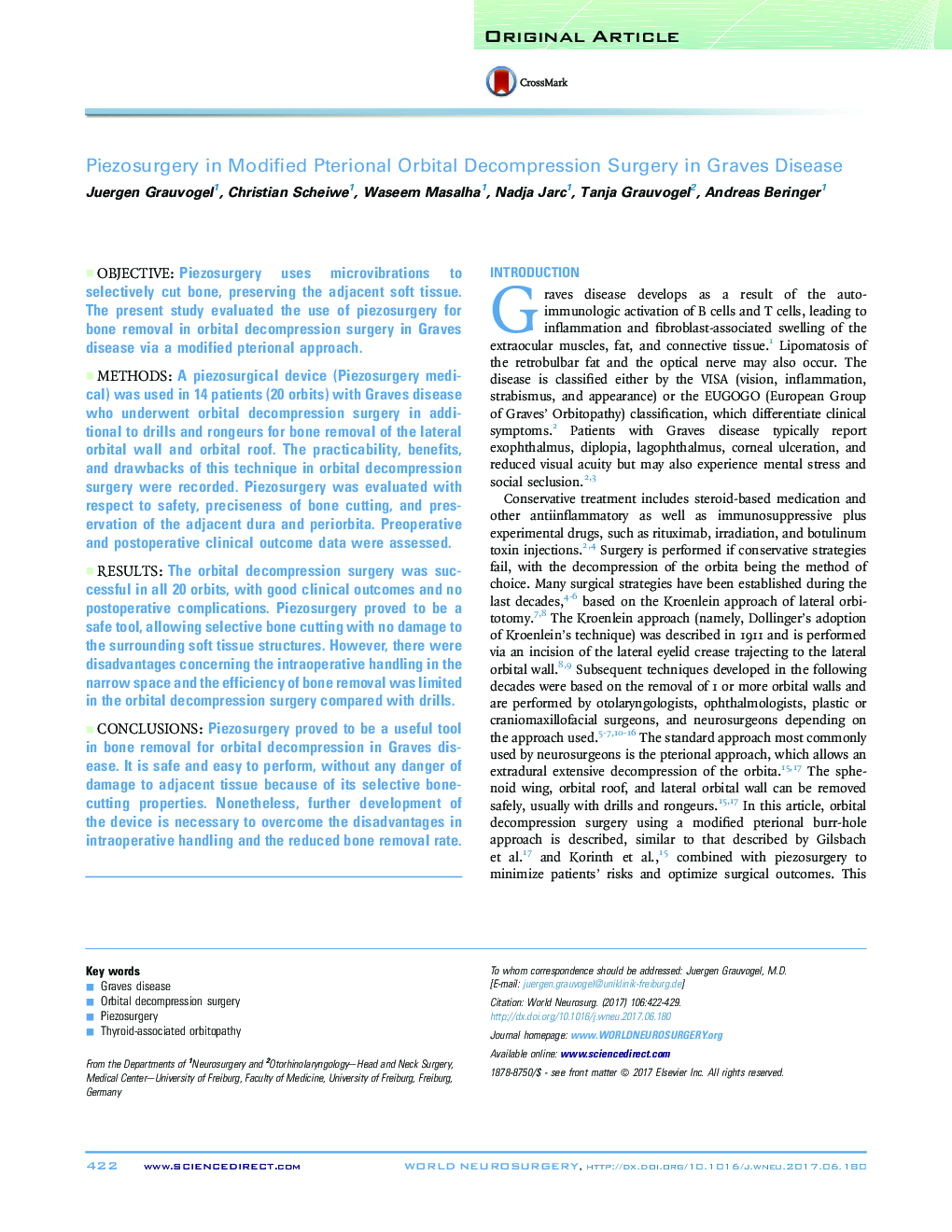| Article ID | Journal | Published Year | Pages | File Type |
|---|---|---|---|---|
| 5634005 | World Neurosurgery | 2017 | 8 Pages |
ObjectivePiezosurgery uses microvibrations to selectively cut bone, preserving the adjacent soft tissue. The present study evaluated the use of piezosurgery for bone removal in orbital decompression surgery in Graves disease via a modified pterional approach.MethodsA piezosurgical device (Piezosurgery medical) was used in 14 patients (20 orbits) with Graves disease who underwent orbital decompression surgery in additional to drills and rongeurs for bone removal of the lateral orbital wall and orbital roof. The practicability, benefits, and drawbacks of this technique in orbital decompression surgery were recorded. Piezosurgery was evaluated with respect to safety, preciseness of bone cutting, and preservation of the adjacent dura and periorbita. Preoperative and postoperative clinical outcome data were assessed.ResultsThe orbital decompression surgery was successful in all 20 orbits, with good clinical outcomes and no postoperative complications. Piezosurgery proved to be a safe tool, allowing selective bone cutting with no damage to the surrounding soft tissue structures. However, there were disadvantages concerning the intraoperative handling in the narrow space and the efficiency of bone removal was limited in the orbital decompression surgery compared with drills.ConclusionsPiezosurgery proved to be a useful tool in bone removal for orbital decompression in Graves disease. It is safe and easy to perform, without any danger of damage to adjacent tissue because of its selective bone-cutting properties. Nonetheless, further development of the device is necessary to overcome the disadvantages in intraoperative handling and the reduced bone removal rate.
